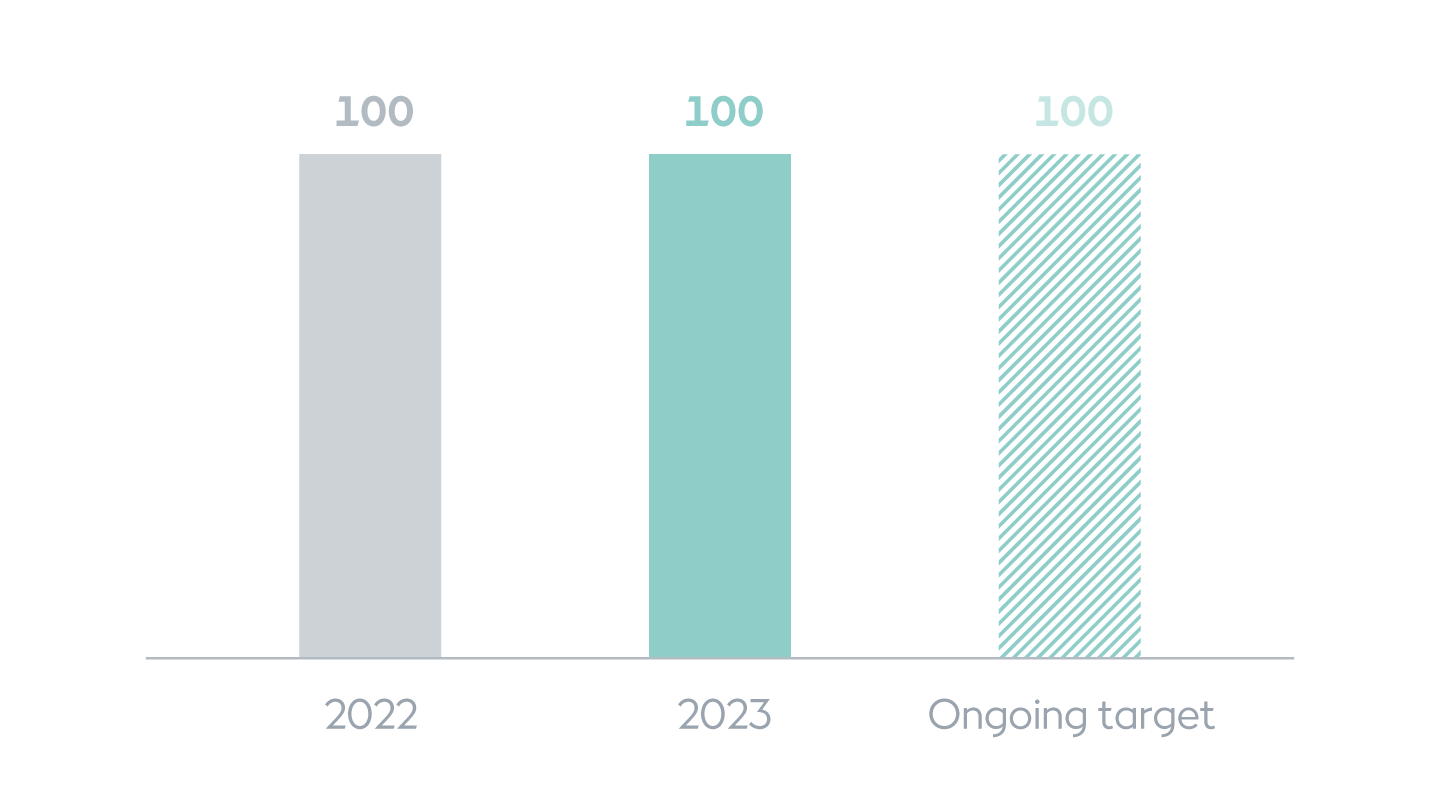Biomass must meet strict sustainability criteria if it is to ensure significant carbon savings compared to fossil fuels. We want to ensure transparency in our approach and our view on the advantages and challenges of using biomass as part of a sustainable energy system.
What role does biomass play in the Danish energy system?
Biomass plays a significant role in the Danish energy system. Due to the widespread use of district heating, biomass can be used with very high efficiency yields of up to 90 %, providing an alternative energy source when the sun isn’t shining, or the wind isn’t blowing.
Capturing and utilising the green biogenic carbon released from biomass also has significant potential in the development of Power-to-X (P2X) projects for the production of green fuels, which we plan to pursue going forward. In general, however, we must be aware of the scale when using certified sustainable biomass.
We expect that our use of biomass will decline as other renewable energy sources increase, but that it will continue to play a role in the Danish energy system. This is because it can function both as a storable energy solution supplementing sun and wind, and in P2X.
We believe our approach works because of the specific design of the Danish energy system, and because we set extremely high requirements for where, how, and what type of biomass we source. We recognise that biomass, while renewable, is a resource we can’t abuse. Otherwise, the climate benefits are lost.
What are we doing?
We only source wooden biomass certified as sustainable by independent, third-party certification bodies, in line with Danish legislation.
Denmark has the most ambitious biomass legislation in Europe, which we believe is absolutely essential for the continued use of biomass. The legislation includes biodiversity, ecosystem, and carbon stock protection, as well as high carbon emissions reductions.
Our biomass is sourced from sustainably managed production forests with ongoing reforestation, and we only source wood pellets and chips which come from residues and low-grade wood, most often from sawdust, regular thinning of forests, harvesting residues, or diseased trees.
How are we doing?
We carry out continuous work to guarantee and document that 100 % of the the biomass we use is certified as sustainable
Certified sustainable wooden biomass sourced (%)

Latest updates from 2023
- We currently operate five combined heat and power (CHP) plants fuelled by biomass, providing district heating and electricity to approximately 400,000 households.
- 94% of our total biomass consumption comes wooden biomass, of which 100% is certified sustainable wooden biomass.
- We continue to maintain ongoing engagement with our biomass suppliers to ensure they align with our sustainability standards.
- The remaining 6% of our biomass comes from residual straw sourced from Danish agriculture.
What’s next?
In the future, we anticipate a reduction in our biomass usage as other renewable energy sources are expected to increase. Despite this, biomass will most likely continue to play a role in the Danish energy system, serving as a storable energy solution to complement solar and wind, as well as being employed in P2X to produce renewable hydrogen.
Key information
International frameworks
We closely follow international frameworks and organisations that advise on and regulate the use of biomass, including:
- EU Renewable Energy Directive
- UNEP Convention on Biological Diversity
- Forest Europe: Sustainable Forest Management
- EU forest and biodiversity strategies for 2030
- Forest and biomass certification schemes: FSC, PEFC, and SBP
Governance
Accountability lies with our Chief Operating Officer.
These efforts contribute towards the following Sustainable Development Goal:
